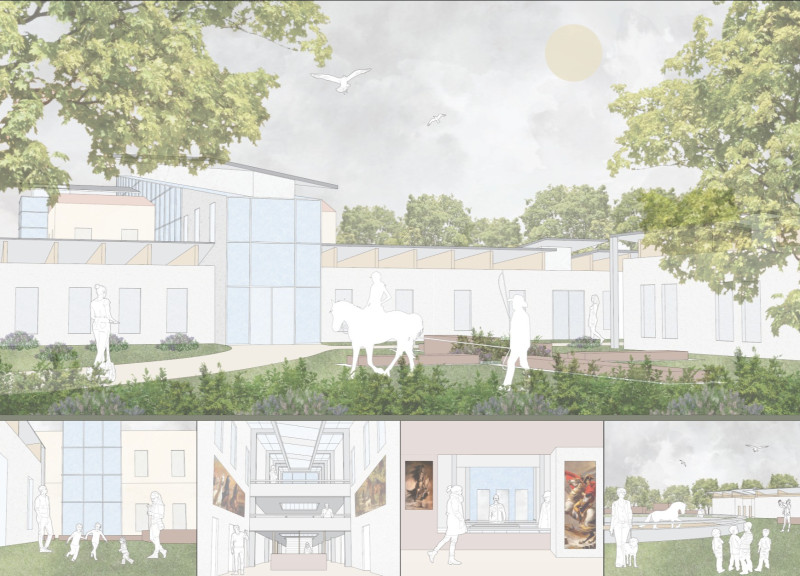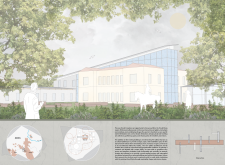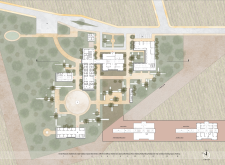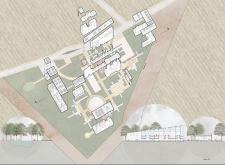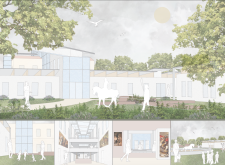5 key facts about this project
The Omuli Complex is a notable development in the Omuli Muiza region, designed as an Intersecting Art Gallery. It aims to support cultural activities by creating a lively center that combines art, community interaction, and nature. Located in the Kurg, North Vidzeme Biosphere Reserve, Macin, Onulkols, and Omuli Skola, the design emphasizes a close connection with its environment.
Design Concept
The gallery serves as a focal point within the complex, acting as an urban lighthouse. It features large, open spaces that invite visitors to explore. The layout is designed to enhance visibility and accessibility, making it easy for people to connect with both the art and the setting. This approach creates an inviting atmosphere for local and traveling art collections.
Spatial Organization
The arrangement of the gallery is intentional, focusing on functionality and visitor experience. By aligning it with the existing lobby, access to the space is straightforward. Movement within the gallery is designed to be smooth, allowing visitors to flow from one area to another. This careful planning encourages people to engage with both the artwork and the natural elements outside.
Contextual Integration
The design thoughtfully responds to the surroundings of the site. It creates pathways that connect different areas, making it easy for visitors to navigate from the west to the east and from north to south. This interconnection enriches the overall experience. The gallery's modern design contrasts with the existing Omuli Skola, bringing a contemporary feel to the area while still respecting its historical context.
Attention to detail enhances the visitor experience. The arrangement of spaces promotes exploration and interaction with art. Large galleries and well-placed circulation paths work together to create a cohesive experience, where art and nature complement each other. The outcome is a balancing act of culture and environment, bringing new energy to the region.


